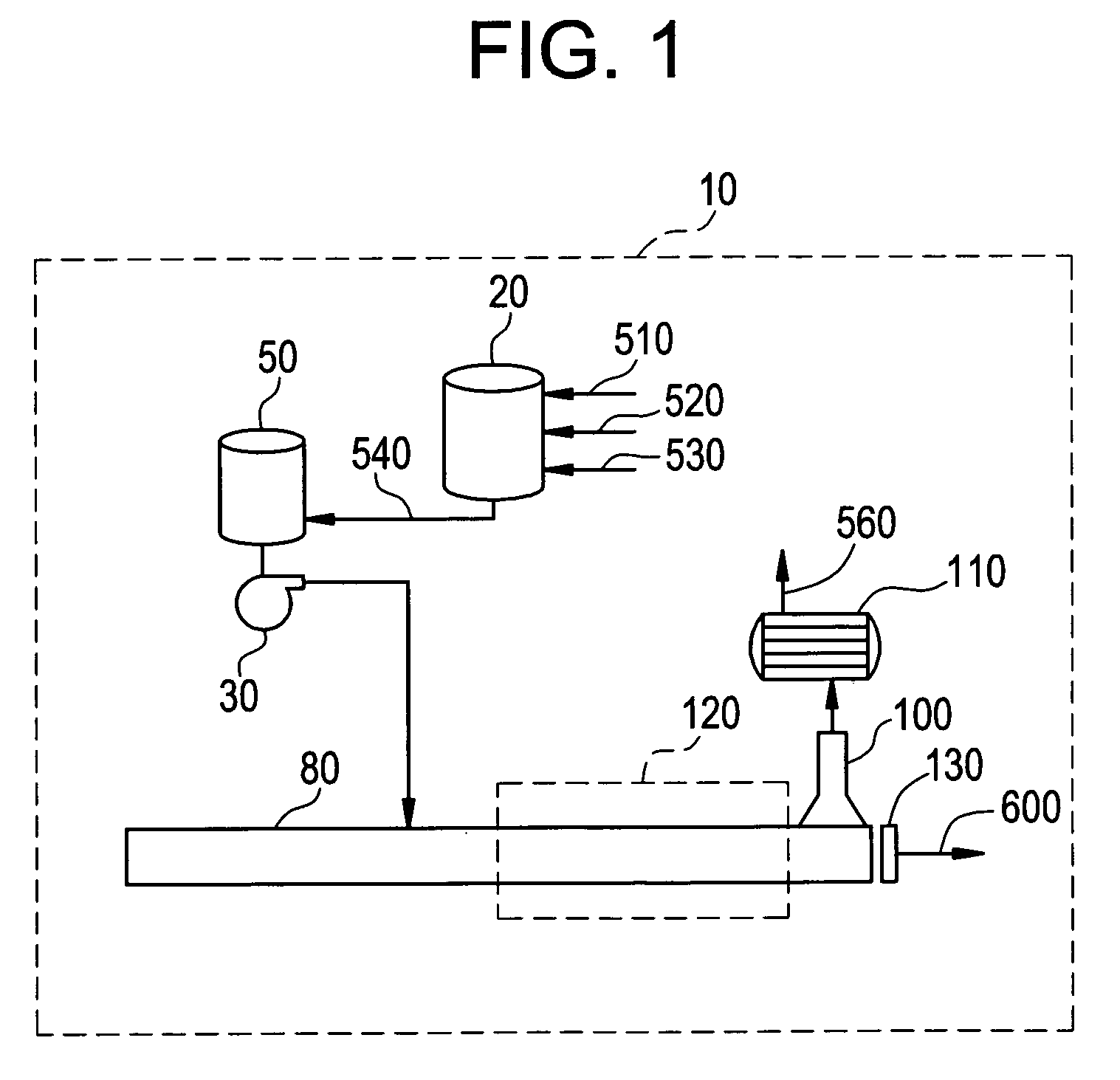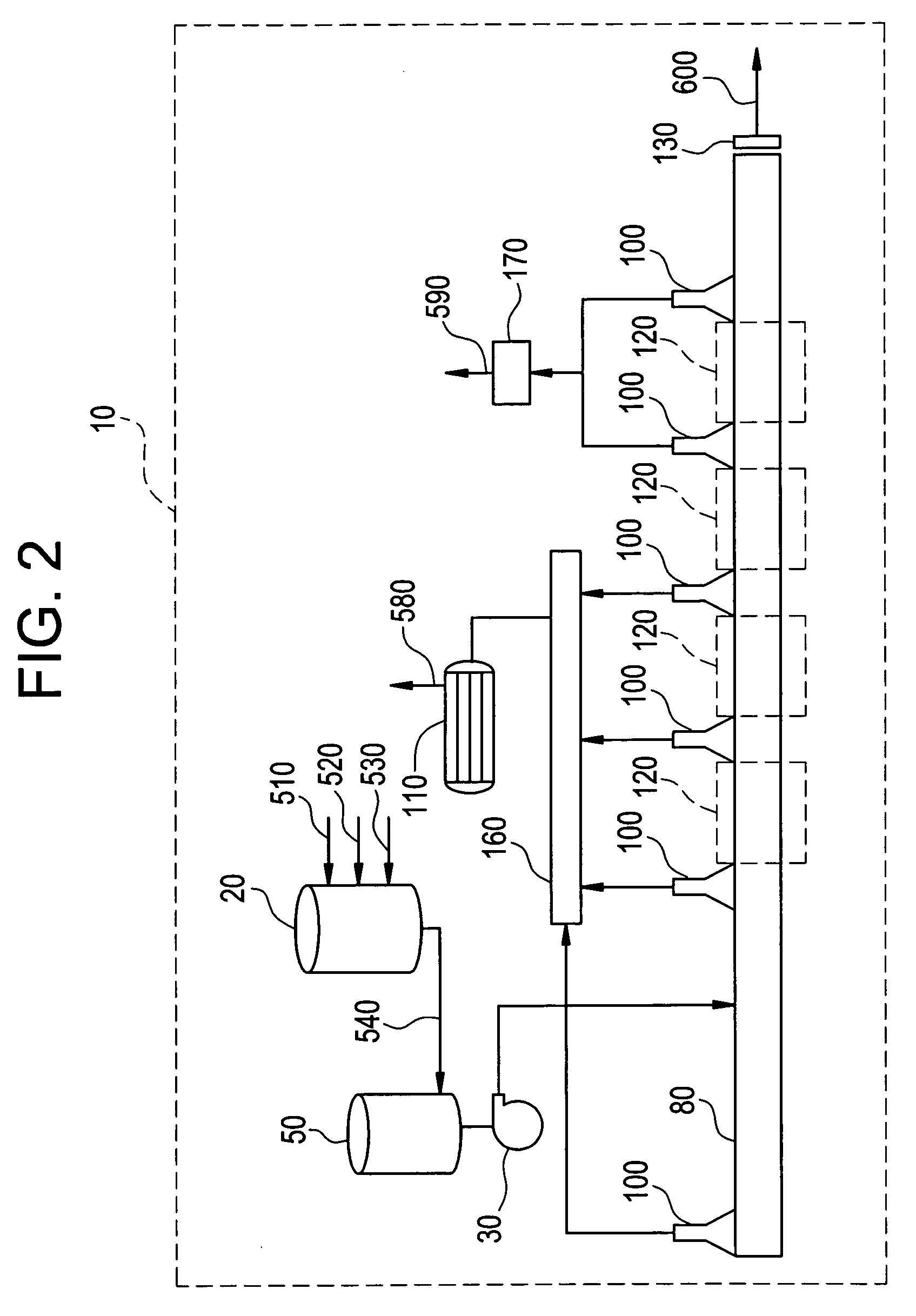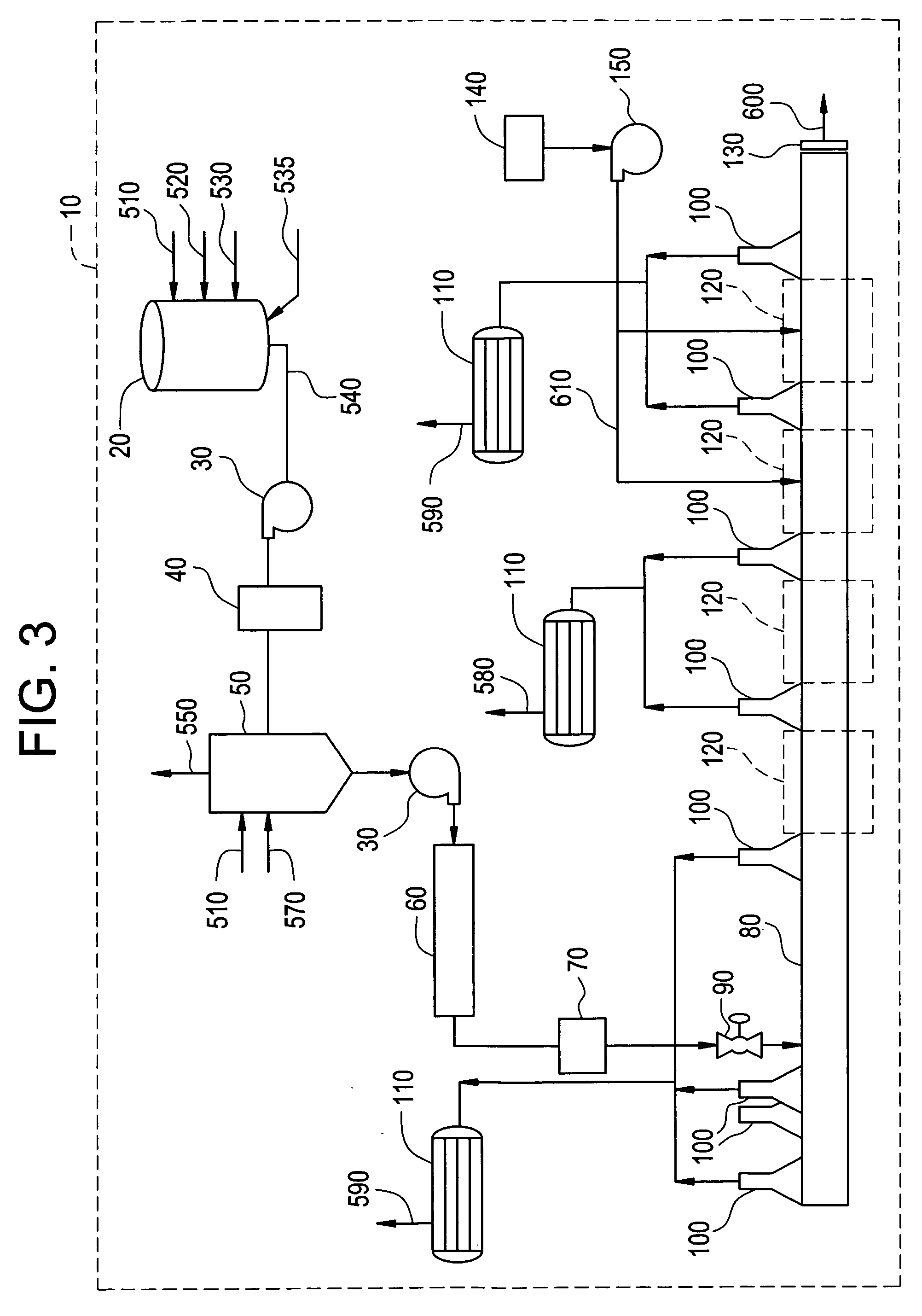Method for preparing polyimide and polyimide prepared thereby
a technology which is applied in the field of preparation of polyimide and polyimide thereby, can solve the problems of degradation of polyimide and its physical properties, inability to precisely control the stoichiometry of reactants, and inconsistent quality of the polyimide produced
- Summary
- Abstract
- Description
- Claims
- Application Information
AI Technical Summary
Benefits of technology
Problems solved by technology
Method used
Image
Examples
example 1
PREPARATIVE EXAMPLE 1
This example describes the preparation of an oligomer mixture. The reactive mixture consisted of 14,000 grams of bisphenol A dianhydride (BPADA), 2,940.98 grams of meta-phenylenediamine (mPD), 177.1 grams of phthalic anhydride (PA), and 30,109 grams of ortho-dichlorobenzene (o-DCB). A 50-gallon glass reactor was charged with o-DCB, BPADA, and PA, and the mixture stirred at room temperature overnight. The mixture was then heated to 160° C. under nitrogen, and molten mPD was added in increments to the reactive mixture over a period of about 24 minutes. As water started to form in the reactor, the temperature of the reactive mixture decreased from about 157.1° C. at the beginning of the mPD addition to about 146.8° C. at the end. Samples of the solution mixture taken from the reactor at different times showed that the molecular weight of the oligomer (Mw / Mn / PDI) was 18966 / 8767 / 2.163 after 30 minutes of reaction, and 25013 / 11197 / 2.234 after about 45 minutes from th...
examples 1-5
The oligomer solution from Preparative Example 1, containing about 35 weight percent of oligomer in o-DCB was continuously fed to an extruder from a heated tank kept at about 165-170° C. The extruder set-up was similar to that described for FIG. 2, above. The extruder was a 25 millimeter diameter, co-rotating, intermeshing extruder of the twin-screw type, and it included 14 barrels (total extruder length to diameter ratio, L / D, of 56), and six vents for the elimination of volatile components. The oligomer solution was added to the extruder at barrel number 4. The solvent o-DCB was removed from the process through vacuum vents located at barrels number 1 (back vent), and 5, 7, 9, 11, and 13 (forward vents). All of the extruder vents were operated at a relatively high level of vacuum corresponding to a pressure of approximately 25 millimeters of mercury. Vent 2, at barrel 5, did not have a vacuum gauge. The screws of the extruder were designed to provide relatively long residence tim...
example 2
PREPARATIVE EXAMPLE 2
The reactive mixture consisted of 14,050 grams of BPADA, 2,941 grams of mPD, 177.1 grams of PA, and 30.1 kilograms of o-DCB. The BPADA amount was 50 grams greater than that in Preparative Example 1 to compensate for the amine-rich product of that example. A 50-gallon glass reactor was charged with o-DCB, BPADA and PA, and the mixture stirred at room temperature overnight. The mixture was then heated to 160° C. under nitrogen, and molten mPD was added in increments to the reactive mixture over a period of about 36 minutes. As water started to form in the reactor, the temperature of the reactive mixture decreased from about 155.2° C. at the beginning of the mPD addition to about 152.5° C. at the end. Samples of the solution mixture taken from the reactor at different times showed that the molecular weight of the oligomer (Mw / Mn / PDI) was 25873 / 11060 / 2.339 after 15 minutes of reaction, and 28544 / 12225 / 2.335 after about 45 minutes, both taken from the time when the ...
PUM
| Property | Measurement | Unit |
|---|---|---|
| weight average molecular weight | aaaaa | aaaaa |
| weight percent | aaaaa | aaaaa |
| weight percent | aaaaa | aaaaa |
Abstract
Description
Claims
Application Information
 Login to View More
Login to View More - R&D
- Intellectual Property
- Life Sciences
- Materials
- Tech Scout
- Unparalleled Data Quality
- Higher Quality Content
- 60% Fewer Hallucinations
Browse by: Latest US Patents, China's latest patents, Technical Efficacy Thesaurus, Application Domain, Technology Topic, Popular Technical Reports.
© 2025 PatSnap. All rights reserved.Legal|Privacy policy|Modern Slavery Act Transparency Statement|Sitemap|About US| Contact US: help@patsnap.com



